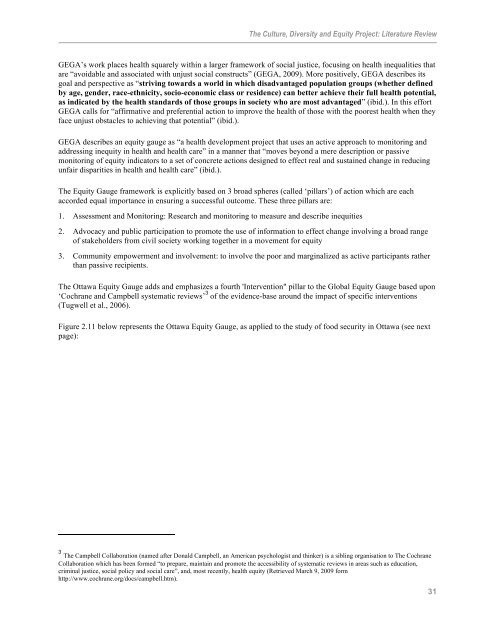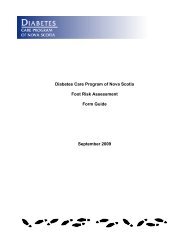CDE Appendix 1 Literature Review - Central East Local Health ...
CDE Appendix 1 Literature Review - Central East Local Health ...
CDE Appendix 1 Literature Review - Central East Local Health ...
Create successful ePaper yourself
Turn your PDF publications into a flip-book with our unique Google optimized e-Paper software.
The Culture, Diversity and Equity Project: <strong>Literature</strong> <strong>Review</strong><br />
GEGA’s work places health squarely within a larger framework of social justice, focusing on health inequalities that<br />
are “avoidable and associated with unjust social constructs” (GEGA, 2009). More positively, GEGA describes its<br />
goal and perspective as “striving towards a world in which disadvantaged population groups (whether defined<br />
by age, gender, race-ethnicity, socio-economic class or residence) can better achieve their full health potential,<br />
as indicated by the health standards of those groups in society who are most advantaged” (ibid.). In this effort<br />
GEGA calls for “affirmative and preferential action to improve the health of those with the poorest health when they<br />
face unjust obstacles to achieving that potential” (ibid.).<br />
GEGA describes an equity gauge as “a health development project that uses an active approach to monitoring and<br />
addressing inequity in health and health care” in a manner that “moves beyond a mere description or passive<br />
monitoring of equity indicators to a set of concrete actions designed to effect real and sustained change in reducing<br />
unfair disparities in health and health care” (ibid.).<br />
The Equity Gauge framework is explicitly based on 3 broad spheres (called ‘pillars’) of action which are each<br />
accorded equal importance in ensuring a successful outcome. These three pillars are:<br />
1. Assessment and Monitoring: Research and monitoring to measure and describe inequities<br />
2. Advocacy and public participation to promote the use of information to effect change involving a broad range<br />
of stakeholders from civil society working together in a movement for equity<br />
3. Community empowerment and involvement: to involve the poor and marginalized as active participants rather<br />
than passive recipients.<br />
The Ottawa Equity Gauge adds and emphasizes a fourth 'Intervention" pillar to the Global Equity Gauge based upon<br />
‘Cochrane and Campbell systematic reviews’ 3 of the evidence-base around the impact of specific interventions<br />
(Tugwell et al., 2006).<br />
Figure 2.11 below represents the Ottawa Equity Gauge, as applied to the study of food security in Ottawa (see next<br />
page):<br />
3 The Campbell Collaboration (named after Donald Campbell, an American psychologist and thinker) is a sibling organisation to The Cochrane<br />
Collaboration which has been formed “to prepare, maintain and promote the accessibility of systematic reviews in areas such as education,<br />
criminal justice, social policy and social care”, and, most recently, health equity (Retrieved March 9, 2009 form<br />
http://www.cochrane.org/docs/campbell.htm).<br />
31

















